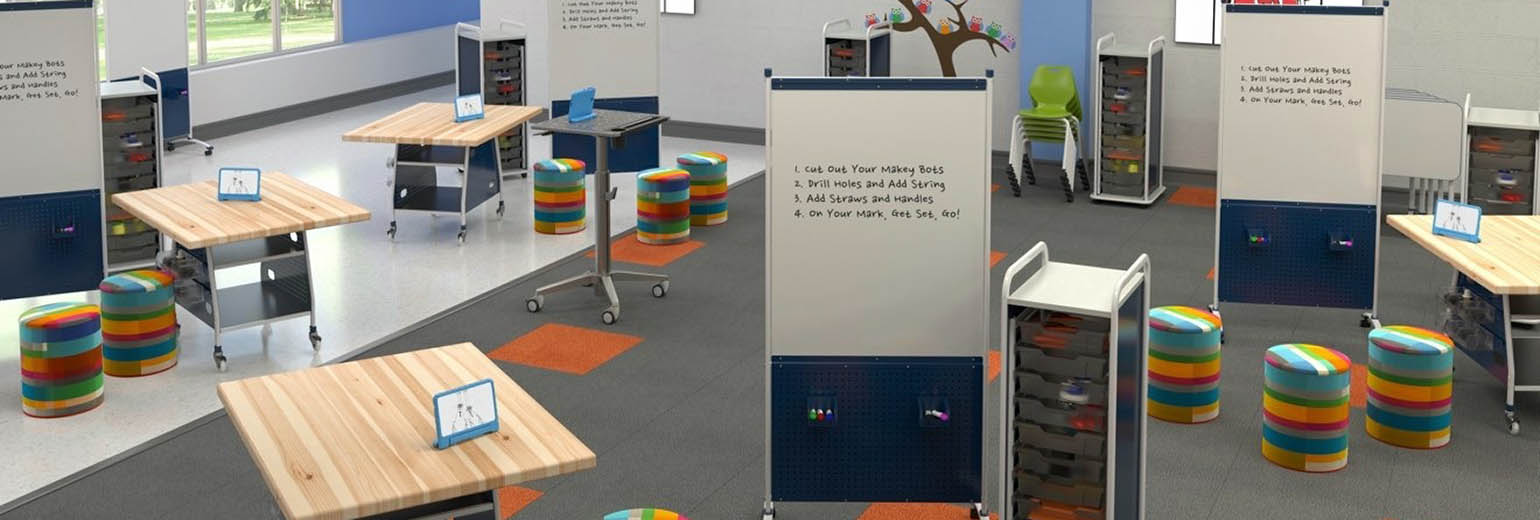The traditional classroom setup, with rows of desks facing forward, worked fine when lecturing was the main form of instruction. But as more schools have shifted from a teacher-centric to a student-centric approach to learning, the design of K-12 learning spaces is evolving as well.
“New kinds of learning require different approaches to classroom design,” said Leslie Wilson, founder and chief executive officer of the nonprofit One-to-One Institute, which advises schools on the use of technology to transform instruction.
Aided by mobile technologies, students are working together in groups to solve problems or challenges, Wilson said. They’re working independently with adaptive online software that tailors the lessons to meet their needs. They’re making movie trailers, designing photo books, or creating other artifacts to demonstrate their learning.
And the environments in which they perform these tasks must be flexible enough to support this more active, collaborative style of learning. For this reason, many schools have begun integrating furniture that students and teachers can move around easily and put together in various configurations to accommodate different groupings and activities.
Want to rethink the design of learning spaces in your own schools, but you’re not sure where to begin? Here are four suggestions.
- Visit other schools.
Wilson recommends visiting other schools to get ideas for what is possible. “Touch it, see, it, and visualize it,” she said. “You’ve got to see the space in your mind in order to create it.”
- Ask students what they want.
“Kids like being able to have a choice in where and how they learn,” said elementary school educator Erin Klein, who studied interior design in college and now writes and speaks about K-12 learning spaces. Klein has several conversations with her students about the type of learning environment they want, then sets about creating it in her classroom.
- Focus on the learning goals.
“Build learning spaces based on what you want kids to be able to do,” Wilson said. For instance, if you want students to be able to create artifacts using technology, you’ll need a space for creating—complete with the tools they’ll need to do this work.
- Consider power supplies.
How are you going to power up students’ digital devices? “Make sure you have enough power outlets to support recharging,” Wilson said. For instance, Paragon builds power supplies directly into many of its student tables and seating.
For more tips and ideas about redesigning K-12 learning spaces to support active and collaborative learning, contact Arizona Furnishings today at 800.872.2287.
– Cindy Eggebrecht


